- Local Time: 02:35 AM
- Weather: 22 ℃ / 72 ℉
The Wait Is Over – The GRAND EGYPTIAN MUSEUM Is Opening Its Doors! Be among the first to explore Egypt’s greatest treasure.
The Aswan High Dam, completed in 1970 with Soviet aid, transformed Egypt by controlling Nile floods, creating Lake Nasser, and supplying nearly half the country's electricity. It boosted agriculture, industry, and tourism but displaced Nubian communities and altered ecosystems. The dam also prompted the rescue of monuments like Abu Simbel. Despite environmental issues, it symbolizes Egypt’s modernization and the 1952 revolution’s legacy.
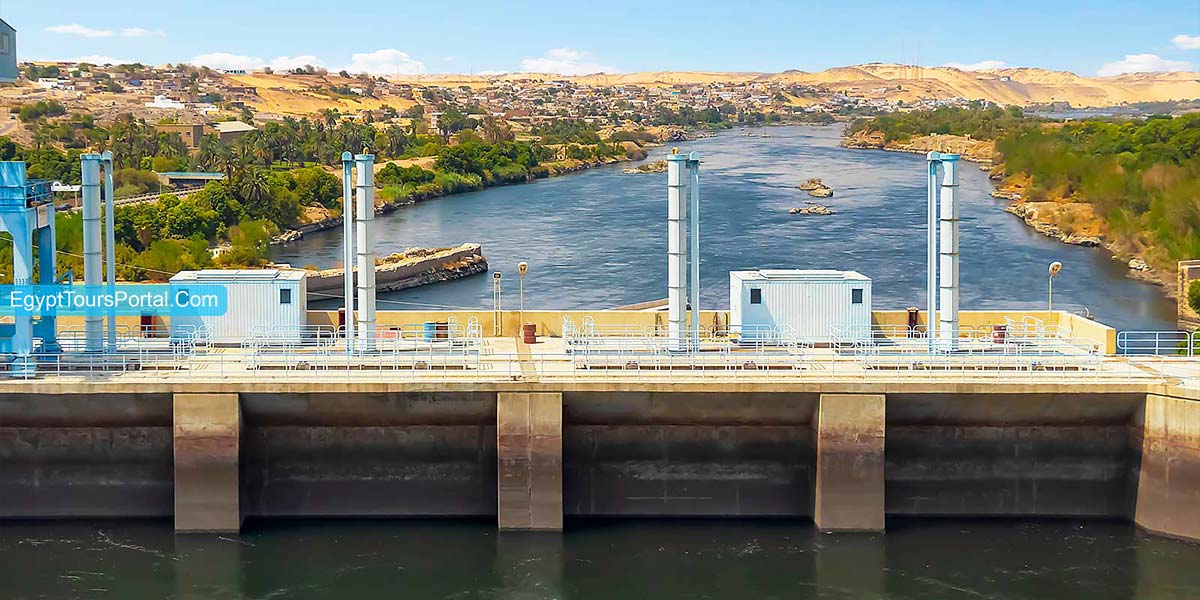
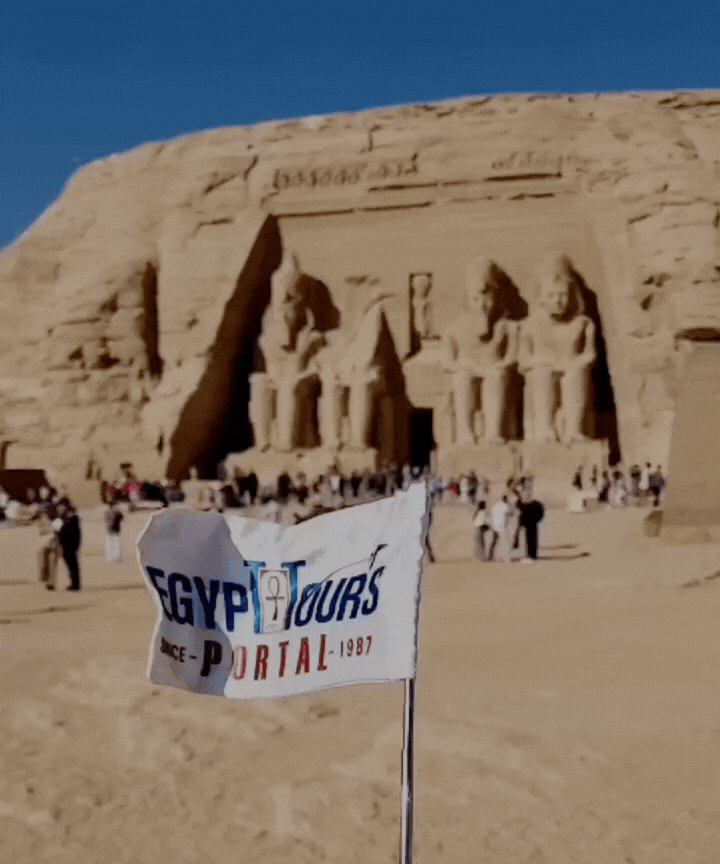
Aswan High Dam was the key the Egyptians used to enter the industrial age and tame the floods of the river Nile, and gain new powers and wealth. The High Dam of Aswan is one of the most important Egyptian achievements of the last century. It was the new Era’s symbol of the 1952 revolution.
It saved Egypt from flooding and provided it with water and electricity. The High Dam is one of the newest miracles to be added to the golden city of Aswan, which enabled Egypt to reach new heights and take an important step into the future.
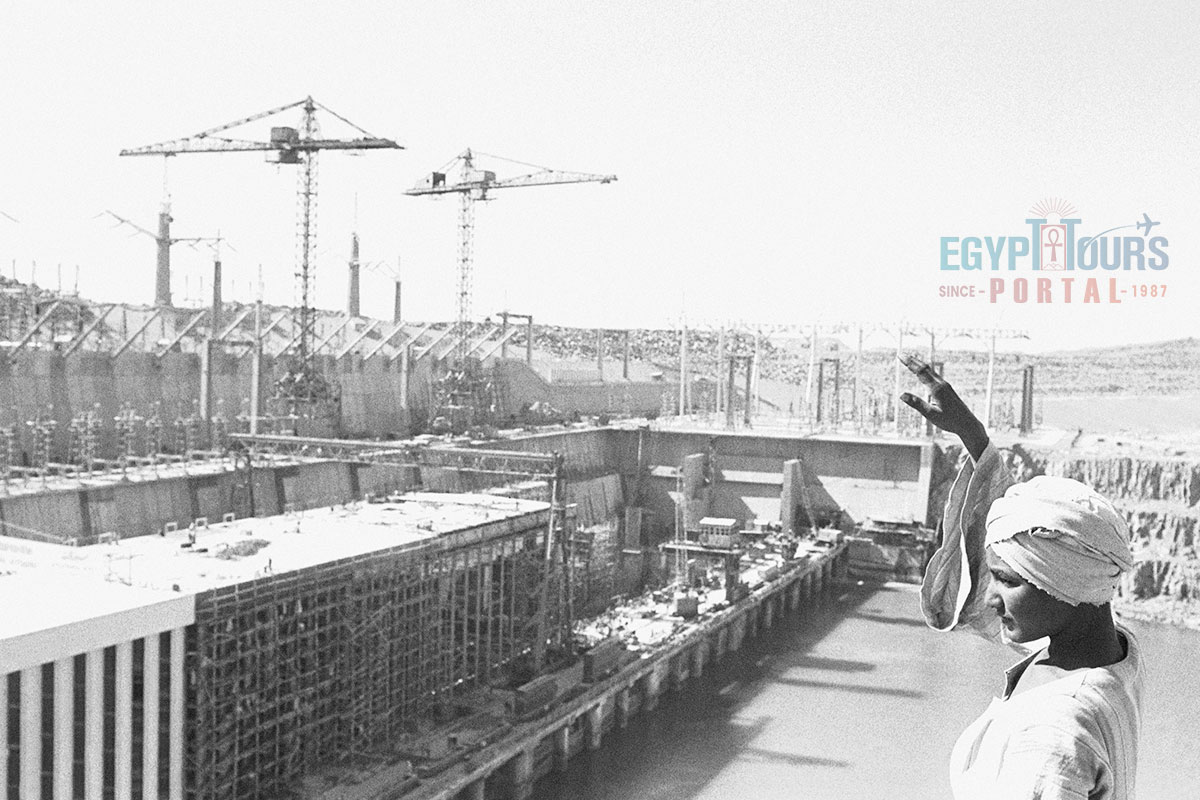
Throughout the history of Egypt, there have been many attempts to construct a dam in Aswan. In the 9th century, during the reign of the Fatimid Caliph Al-Hakim Bi-Amr Allah a polymath and engineer by the name of Ibn al-Haytham attempted to regulate the flooding of the Nile by building a dam, but was not successful.
In 1912 AD, King Farouk ordered a Greek-Egyptian engineer called Adrian Daninos to build the high dam, but it was not completed. The Great President Gamal Abd El-Nasser ordered to build the High Dam after the revolution in 1952, but he was met with the western refusals from the UK and the US to co-operate, and that’s why he turned to the Soviet Union for their technological and financial support.
The work started on January 9th, 1960, and was completed in 1971 in the spring. Lake Nasser was the result of the High Dam construction, which is an outstanding lake between Egypt and Sudan. It is one of the largest man-made lakes in the world, built to store water.
It sits on an area of 5,250 sq km (2,030 sq mi) and is capable of holding up to 132 cubic km (1.73×1011 cu yd) of water. The Egyptian Government made a great effort to save the Nubian monuments from the damage caused by the rising level of water.
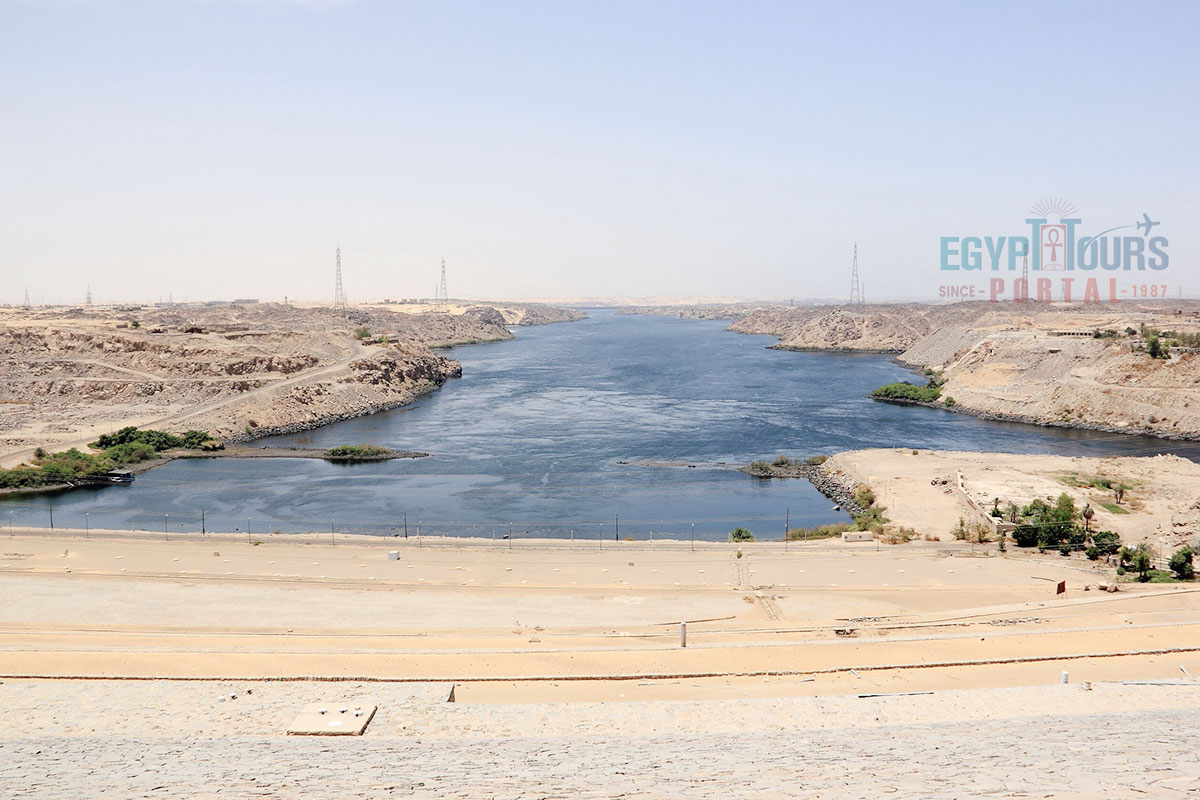
The Aswan High Dam is located in southern Egypt, about 13 kilometers (8 miles) south of the city of Aswan. It spans the Nile River at one of its narrowest points, near the First Cataract.
The dam’s strategic position controls the flow of the Nile river, helping to regulate seasonal flooding, provide water for irrigation, and generate hydroelectric power. This impressive structure was built between 1960 and 1970 with assistance from the Soviet Union.

Aswan High Dam is 111 m high, with a length of 3,830 m (12,570 ft), and a width of 980 m (3,220 ft). It can hold up to 43,000,000 cubic meters (56,000,000 cu yd) of material and has a hydroelectric plant, with six turbines, capable of producing 2.1 million kilowatts, and this is the reason why it is considered one of the most important Egyptian sources for electricity and water.
The total investment in order to construct such a huge project cost $1.12bn, paid by the Soviet Union as a form of investment with a 2% interest. It provides water for around 33,600 km of irrigation land stored at Lake Nasser.
It required some 44 million cubic meters of building materials and a workforce of about 34,000 people to be built in full over 10 years. The High Dam also has 12 Francis turbines, with a capacity of 2,100 MW to supply electricity for industrial and household use.
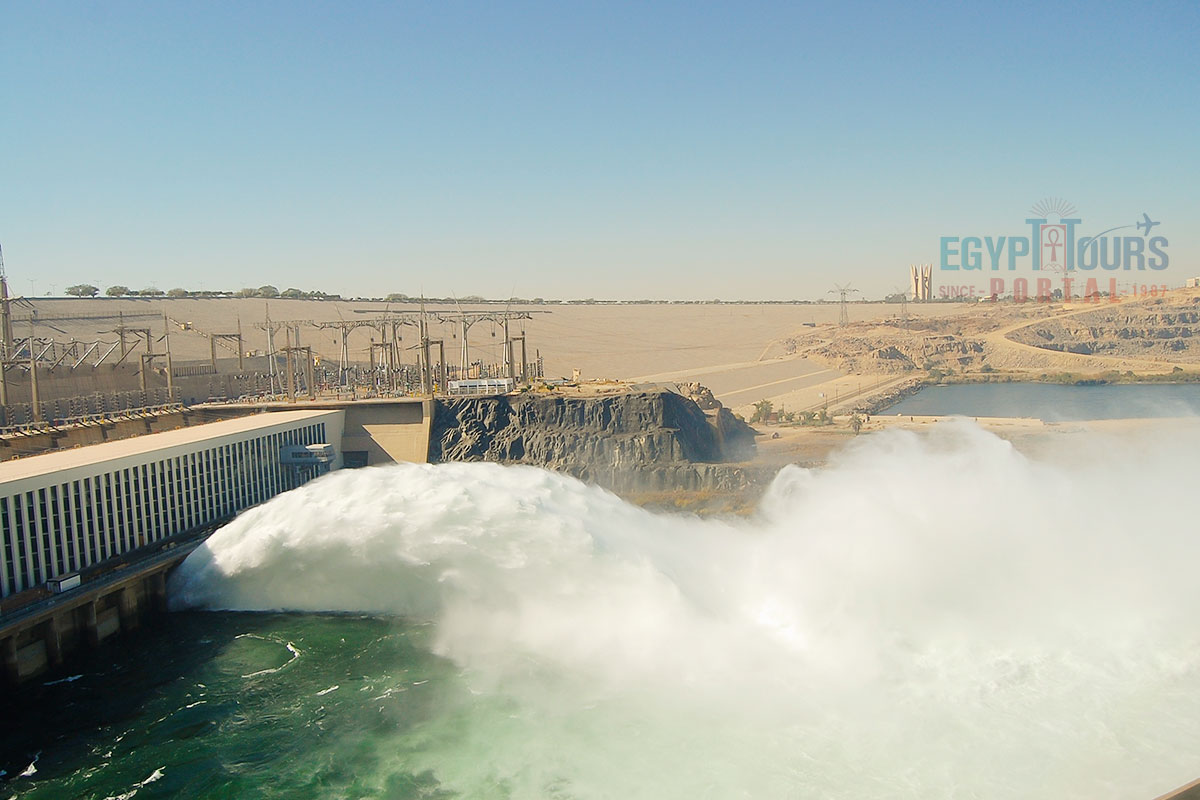
The High Dam was mainly constructed to regulate the flow of the River that resulting in supplying irrigation water for all parts of Egypt for the whole year. It also contributed to increasing tourism by offering the chance to navigate across the Nile River during Nile cruise packages. Its water is used to feed 12 power turbines. Let’s divide the impacts of the High Dam into categories:
The great High Dam has provided the ability for Egyptians to control the annual Nile flood. It now uses floodwater to irrigate thousands of acres, to improve navigation around Aswan, and supply the country with a huge amount of electricity, up to 50% of the entire electricity production.
It helped in the generation of hydropower, and it caused an increase in industrial activities and diversity because of the availability of electricity. The dam protected Egypt from droughts and provided irrigation waters to 2 million Feddan (840,000 hectares) that became available for farming for various crops like rice, wheat, cotton, sugar cane, and acted as the new homes for 500,000 families.
The High Dam gave the country peace and stability because of the economic activities and the higher standard of living. It has also benefited in the settlement issues. It provided huge opportunities for youth to raise their social standard while finding new job offers.
The High Dam led to the spread of a dangerous virus called schistosomiasis (bilharzia), and it’s one of the negative impacts. It helped in the implications of fish production and has changed the flora fauna.
The great High Dam helped in the reclamation of the desert, which helped a lot in the development of the agricultural process. It changed the soil salinity and waterlogging. It changed the flow in the Nile both upstream and downstream of the dam. It caused sedimentation in the River Nile and Lake Nasser.
While the Aswan High Dam has brought significant benefits, but unfortunately caused several environmental and social issues which including:
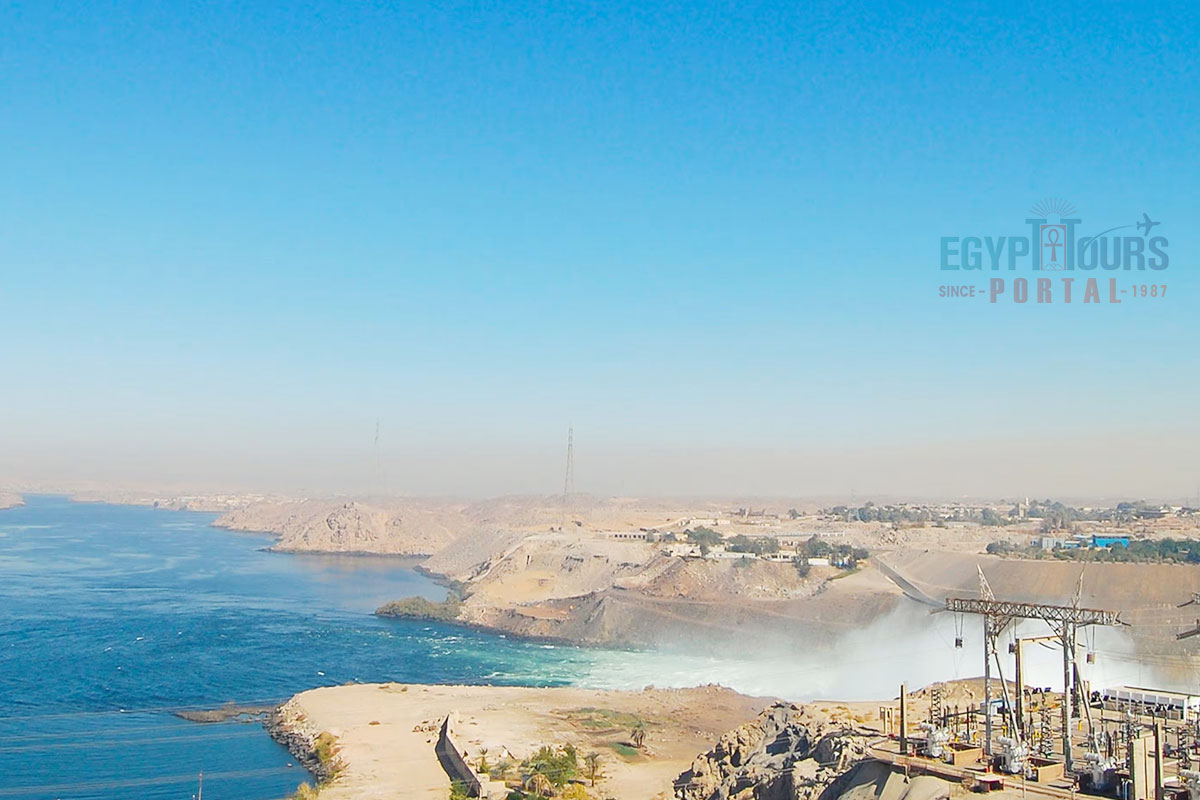
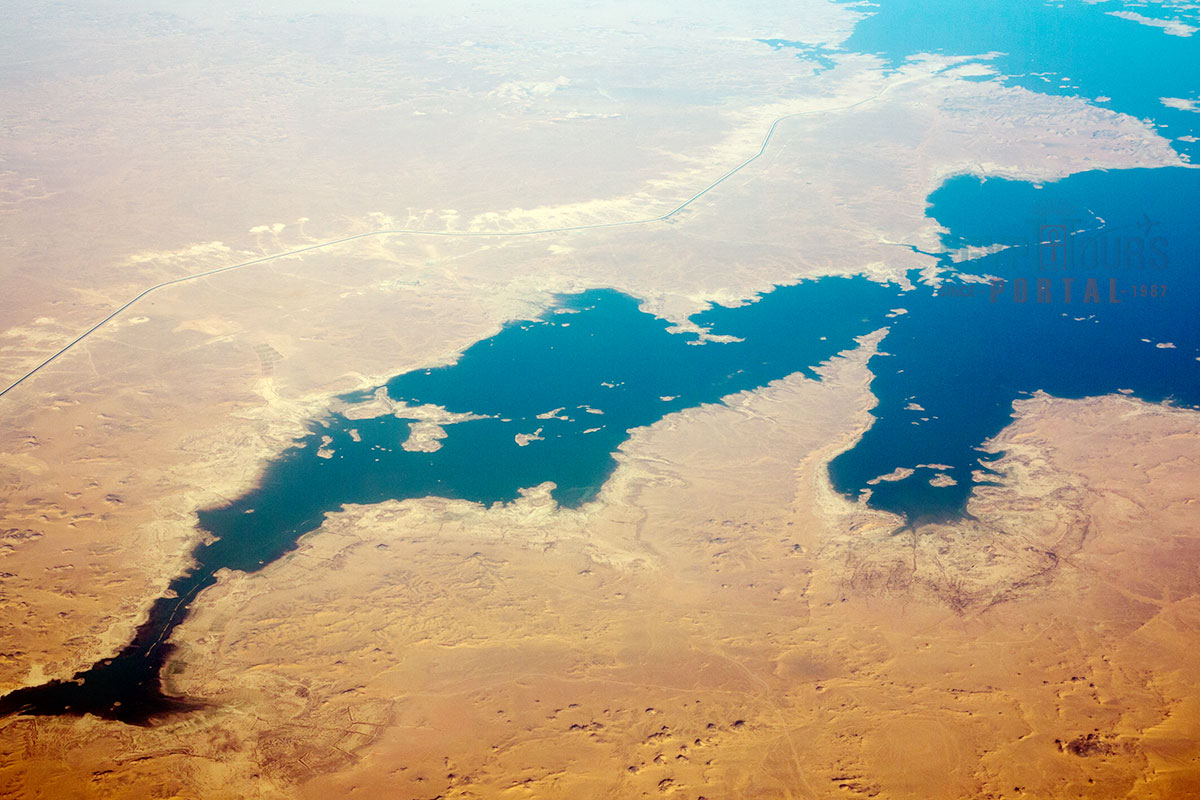
Lake Nasser is by far one of the largest artificial lakes in the world, which was created in the 1960s as a result of the construction of the Aswan High Dam. This vast reservoir spans over 5,250 square kilometers (2,030 sq mi), extending 550 km (340 mi) in length and up to 35 km (22 mi) in width, covering parts of southern Egypt and northern Sudan.
Named after Egyptian President Gamal Abdel Nasser, the lake played a pivotal role in controlling the Nile's floods, generating hydroelectric power, and providing water for irrigation. However, its creation led to the displacement of around 50,000 Nubians, who were relocated to a new region called New Nubia, approximately 45 km from Aswan.
Culturally, the most significant impact was the relocation of 22 ancient monuments, including Abu Simbel and Philae Temple, in an ambitious UNESCO-led archaeological rescue mission, one of the most complex and costly in history. The lake, which has a maximum depth of 130 meters (430 ft) and a volume of 132 km³ (32 cu mi), receives its primary inflows from the Nile and Wadi Allaqi, while its primary outflows are the Nile and the Toshka Spillway.
Despite initial opposition from Sudan, whose land was partly submerged, Lake Nasser has become an important resource, boosting Egypt's agriculture, fishing, and tourism industries. The portion of the lake in Sudan is called Lake Nubia, though 83% of it lies in Egypt, with its shoreline stretching 7,844 km (25,735,000 ft) and a surface elevation of 183 meters (600 ft).
In the end, hope you enjoyed all the information in this article, and if you have an exciting sense of adventure and decide to explore Egypt, then you can check our Egypt tours and Nile river cruise, which provide various Egypt vacations to all the best destinations in the land of Pharaohs.
Day Trip to Abu Simbel from Aswan For New Zealander Travelers Day Trip to Abu Simbel...
Tour Location: Abu Simbel...
Aswan Sightseeing Tour for New Zealander Travelers Aswan Sightseeing tour will provi...
Tour Location: Aswan...
Day Trip from Aswan to Edfu & Kom Ombo Temples for New Zealander Travelers Day T...
Tour Location: Edfu/Kom Ombo...
Day Trip from Aswan to Cairo by Plane for New Zealander Travelers Day Trip from Aswa...
Tour Location: Cairo/Giza...
The Aswan High Dam was built for multiple purposes:
Flood Control: To regulate the Nile’s annual flooding, which previously caused destruction during high flows and left the region in drought during low flows.
Irrigation: The dam enables year-round irrigation, supporting agricultural activities in Egypt, which depend heavily on the Nile for water.
Hydroelectric Power: The dam generates a significant portion of Egypt’s electricity, providing energy for homes, industries, and businesses.
Water Storage: It stores water for use during drought periods, ensuring a reliable water supply for the country’s growing population.
The Abu Simbel Temples were among the most significant ancient structures relocated in the 1960s to avoid submersion by Lake Nasser. These temples, built by Pharaoh Ramses II in the 13th century BCE, were dismantled and reconstructed on higher ground with the assistance of an international effort coordinated by UNESCO. Other monuments, such as the Philae Temple complex, were also moved to preserve Egypt’s heritage.
The large artificial lake created by the Aswan High Dam is called Lake Nasser. It is one of the largest man-made lakes in the world, stretching over 500 kilometers (310 miles) into Egypt and Sudan. The reservoir serves as a critical water source for irrigation and hydroelectric power and plays a central role in Egypt’s water management strategy.
The entire country of Egypt deserve to be explored with its every heavenly detail but there are places that must be seen before any other such as the breathtaking Hurghada's red sea, The wonders of Cairo the pyramids of Giza, the great sphinx, the Egyptian Museum, Khan El Khalili Bazaar, the wonders of Luxor like Valley of the Kings, Karnak & Hatshepsut temple and the wonders of Aswan such as Abu Simbel temples, Philea temple, Unfinished obelisk and The Wonders of Alexandria like Qaitbat Citadel, Pompey's Pillar and Alexandria Library. Read more about the best places to visit in Egypt.
If you want to apply for a Visa On Arrival that lasts for 30 days then you should be one of the eligible countries, have a valid passport with at least 6 months remaining and pay 25$ USD in cash, as for the E-Visa for 30 day you should have a valid passport for at least 8 months, complete the online application, pay the e-visa fee then print the e-visa to later be presented to the airport border guard. You could also be one of the lucky ones who can obtain a free visa for 90 days. Read more about Egypt travel visa.
Egypt has a variety of delicious cuisines but we recommend “Ful & Ta’meya (Fava Beans and Falafel)”, Mulukhiya, “Koshary”, a traditional Egyptian pasta dish, and Kebab & Kofta, the Egyptian traditional meat dish.
The best time to travel to Egypt is during the winter from September to April as the climate becomes a little tropical accompanied by a magical atmosphere of warm weather with a winter breeze. You will be notified in the week of your trip if the Climate is unsafe and if any changes have been made.
You should pack everything you could ever need in a small bag so you could move easily between your destinations.
We have been creating the finest vacations for more than 20 years around the most majestic destinations in Egypt. Our staff consists of the best operators, guides and drivers who dedicate all of their time & effort to make you have the perfect vacation. All of our tours are customized by Travel, Financial & Time consultants to fit your every possible need during your vacation. It doesn't go without saying that your safety and comfort are our main priority and all of our resources will be directed to provide the finest atmosphere until you return home.
You will feel safe in Egypt as the current atmosphere of the country is quite peaceful after the government took powerful measures like restructuring the entire tourist police to include all the important and tourist attractions in Egypt. Read more about is it safe to travel to Egypt.
Wear whatever feels right and comfortable. It is advised to wear something light and comfortable footwear like a closed-toe shoe to sustain the terrain of Egypt. Put on sun block during your time in Egypt in the summer to protect yourself from the sun.
The best activity is by far boarding a Nile Cruise between Luxor and Aswan or Vise Versa. Witness the beauty of Egypt from a hot balloon or a plane and try all the delicious Egyptian cuisines and drinks plus shopping in old Cairo. Explore the allure and wonders of the red sea in the magical city resorts of Egypt like Hurghada and many more by diving and snorkeling in the marine life or Hurghada. Behold the mesmerizing western desert by a safari trip under the heavenly Egyptian skies.
There are a lot of public holidays in Egypt too many to count either religious or nation, the most important festivals are the holy month of Ramadan which ends with Eid Al Fitr, Christmas and new years eve. Read more about festivals & publich holidays in Egypt.
Egypt is considered to be one of the most liberal Islamic countries but it has become a little bit conservative in the last couple of decades so it is advised to avoid showing your chest, shoulders or legs below the knees.
Arabic is the official language and Most Egyptians, who live in the cities, speak or understand English or at least some English words or phrases. Fewer Egyptians can speak French, Italian, Spanish, and German. Professional tour guides, who work in the tourism sector, are equipped to handle visitors who cannot speak Arabic and they will speak enough English and other languages to fulfill the needs of all our clients.
The fastest way is a car, of course, a taxi. If you are in Cairo ride a white taxi to move faster or you could board the fastest way of transportation in Egypt metro if the roads are in rush hour.
The temperature in Egypt ranges from 37c to 14 c. Summer in Egypt is somehow hot but sometimes it becomes cold at night and winter is cool and mild. The average of low temperatures vary from 9.5 °C in the wintertime to 23 °C in the summertime and the average high temperatures vary from 17 °C in the wintertime to 32 °C in the summertime. The temperature is moderate all along the coasts.
It is the home of everything a traveler might be looking for from amazing historical sites dating to more than 4000 years to enchanting city resorts & beaches. You will live the vacation you deserve as Egypt has everything you could possibly imagine.









